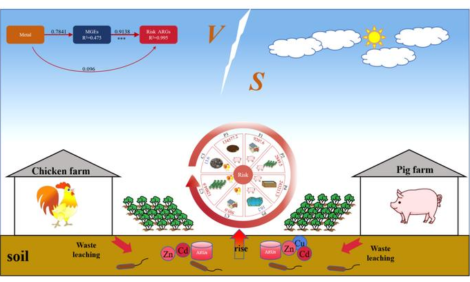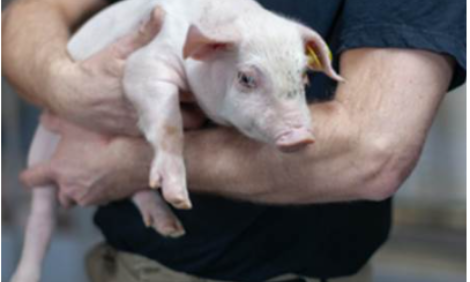



Canada-South Korea Free Trade Agreement
The free trade between Canada and South Korea was formally launched in July 2005 but has gone largely nowhere since then despite several high-level meetings between the leaders, such as a November meeting in 2010 on the fringes of the G-20 in Seoul and the South Korean President Lee Myung-bak attended the G20 Summit in Toronto in June, according to Canada Pork International.The Republic of Korea is Canada’s seventh largest merchandise trading partner and thirs3rd largest in Asia, after China and Japan. Canada-South Korea two-way merchandise trade reached more than $9.8 billion in 2010. Canadian merchandise exports to South Korea were $3.7 billion while Canadian merchandise imports were $6.1 billion. Canada’s main exports to South Korea include mineral fuels and oils, mineral ores, aluminum, wood pulp and pork. Canada’s top merchandise imports from South Korea include vehicles, electrical and electronic equipment, machinery, mineral fuels and oils, and iron and steel.
Canada is the second largest supplier of pork to the Republic of Korea (Korea). In 2011, Canada’s pork exports are expected to reach $300 million. Korea is Canada’s fourth largest market in value terms accounting for 10 per cent of the total.
Korean import tariffs on pork are in the 22.5 to 25 per cent range. Elimination of these tariffs in a free trade agreement with Korea promised substantial growth in high quality Canadian pork exports.
Korea has an active and expanding programme of FTA negotiations. FTAs with Chile and the European Union are already in place. These provide reduced tariffs and eventually free entry for pork which competes with Canadian pork. Canada is losing market share to US and EU exporters – as Korean importers see no immediate prospect of Canada concluding an FTA.
The Commons Standing Committee on International Trade (SCIT) recognised that if Canada does not get access to the Korean market on the same terms as its competitors, then Canadian exporters will lose their existing position in Korea. This concern clearly applies to Canadian pork exports.
Canadian pork exporters cannot afford to be at a permanent tariff disadvantage vis-à-vis the EU, US, Chile or any other of Canada’s competitors.
Korea has also concluded a free trade agreement with the United States (KORUS) which has been approved by Congress. Ratification of KORUS is before the Korean legislature. US pork exporters expect that as a result of KORUS, their exports will increase by nearly $700 million and increase the price of every hog produced by $10.
Tariffs on US exports to Korea of fresh and frozen pork will be eliminated by 2016. The preference over non-FTA pork imports will accelerate and cumulate quickly.
One of Canada’s stated objectives for negotiating free trade agreements is to ensure the Canadian exporters remain competitive in markets where the United States has reached agreements. Failure to achieve tariff parity with the US and other competitors not only puts Canadian exporters at a competitive disadvantage, it threatens the long-term viability of value-added agri-food processing activity in Canada. Every time the US gets better access for its pork or beef than Canada, it becomes more difficult to justify slaughtering livestock in Canada.
Without an FTA, Canadian pork exports to Korea will be eliminated or virtually eliminated over a very short period estimated at 15 to 24 months. In addition, Canadians exporters would be denied export growth of at least $200 million a year.
Exports of pork to Korea will be shifted back into the Canadian market. Canadian prices for pork and the prices which farmers receive for their hogs will decline.
In 2008, Canada and Korea were in the midst of negotiations; no deal had been concluded. It is impossible to predict the impact of a free trade agreement without knowing what is contained in that agreement. We will never know what could be in the agreement unless negotiations are concluded. And they will never be concluded as long as the Government uses continuing due diligence analysis to justify avoiding contact with their Korean counterparts.
Canadian pork producers and exporters urgently need the Government of Canada to stand up for their interests by completing negotiations of an FTA access to Korea as soon as possible.
When the negotiations with Korea were put into the deep freeze, it was too early o come to a conclusion on whether or not a Canada-Korea FTA was a good or bad deal; there were important unanswered questions. The decision to effectively abandon the KORCAN FTA negotiations was based on the acceptance of allegation and conjecture. There was not and still is not any basis for refusing to negotiate.
If there ever were valid reasons to slow down and assess the negotiations, these have been addressed or are within reach of resolution.
SCIT, in its March 2008 study, addressed the pros and cons of a Canada-Korea FTA. They also assess support for the agreement and concerns expressed by a range of stakeholders. SCIT did not recommend suspending or abandoning negotiations. This is the status quo but Canadian pork producers were never consulted about this decision nor did they agree to their interests being put into limbo.
Since the last negotiating session in 2008, KORUS has been re-negotiated and approved by Congress and, in fact, re-negotiated to address a number of SCIT’s concerns. It will enter into force early in 2012.
Among the issues which SCIT found were frustrating progress were Korea’s denial post-BSE of access for Canadian beef and numerous concerns expressed by the auto industry and its unions.
A WTO challenge and subsequent consultations have favourably resolved the access for beef issue. Access for beef from cattle less than 30 months old will be restored imminently. However, without a KORCAN FTA, this win may be a very hollow victory.
The KORUS, revised and improved by President Obama’s personal interventions, addresses the concerns expressed by the Canada automotive industry non-tariff measures, market access and safeguards. It is not clear for the public record why Canada has not tried to obtain the same concessions.
What happened to SCIT’s recommendations since 2008?
Recommendation 1:
That the Government of Canada make every effort to ensure that Canada negotiates access to the Korean market on the same or better terms as already gained by its international competitors.
Canada cannot do this without negotiating with Korea. Canada is losing by default. How does this stand up for the rights of Canadian pork exporters?
Recommendation 2:
That, to ensure that Canadian industries are not put at a disadvantage in the Korean market in the future, the Government of Canada negotiate a most-favoured nation clause in the Canada-Korea free trade agreement.
This too must be negotiated. If Canada does not try, it will never be able to conclude a deal. We recognise as did the SCIT that Canada is a relatively small country and does not enjoy unlimited leverage, but this is not an excuse for not trying.
B. Addressing Market Access Barriers facing Canadian Automobile Manufacturers
These concerns have been addressed in the KORUS. Canada cannot obtain the same deal as the US without negotiating.
Recommendation 6:
That the Government of Canada make any free trade agreement with Korea conditional on restoring access for Canadian beef exporters to the Korean market.
This market access problem has been addressed through successful WTO dispute settlement. Without an FTA, which must be negotiated, there will be no benefit from this win.
Recommendation 7:
That the Government of Canada include a definition of ice wine in the text of a free trade agreement with Korea, as well as reference to geographic indicators for Canadian spirits and wine-producing regions.
This is a valid concern which will not be resolved without negotiation.
Canadian pork producers and exporters are calling on the Government of Canada to stand up for their interests in the Korean market. This is not a question simply of gaining market access – it is also about not losing what we have.
Canadian exports to South Korea
In 2010 Canada exported $2.8 billion in pork products to over 140 countries. Canada is the third largest pork exporter in the world and accounts for nearly 20 per cent of the world pork trade.
| Table 1, South Korea is Canada’s fifth largest pork export market | ||||
| Volume (tonnes) | Value ($ million) | |||
|---|---|---|---|---|
| 2010 | 2011 (Jan-Aug) | 2010 | 2011 (Jan-Aug) | |
| TOTAL | 1,097,694 | 742,226 | 2,768.0 | 2,004.0 |
| USA | 336,111 | 202,956 | 951.0 | 639.0 |
| Japan | 225,077 | 139,818 | 852.3 | 548.0 |
| China/HK | 109,792 | 88,618 | 151.6 | 131.3 |
| Russia | 87,131 | 86,085 | 185.4 | 210.2 |
| South Korea | 55,162 | 67,563 | 99.4 | 166.1 |
| Mexico | 72,323 | 35,810 | 104.7 | 46.1 |
| Philippines | 48,917 | 23,668 | 62.4 | 32.4 |
| Australia | 40,920 | 22,063 | 119.0 | 69.7 |
| Taiwan | 31,785 | 20,505 | 56.2 | 40.7 |
| Source: Statistics Canada | ||||
It is expected that in 2011, Canadian pork exports to South Korea would be close to 100,000 tonnes, worth more than $300 million. This would represent nearly 10 per cent of all Canadian pork exports.
| Table 2. Canada is South Korea’s second largest pork supplier | |
| South Korea Pork Imports 2011 (Jan-Sept) (tonnes) | |
|---|---|
| USA | 139,320 |
| Canada | 65,864 |
| Chile | 33,288 |
| Spain | 26,460 |
| Denmark | 22,350 |
| Austria | 18,137 |
| France | 16,239 |
| Others | 94,033 |
| TOTAL | 415,690 |
| Source: Global Trade Information | |
Imported Canadian chilled pork receives a significant premium over its US competition. In September, the average value of Canadian chilled pork was US$5.50 per kg as compared to US$4.40 per kg for US pork.
| Table 3. South Korea Chilled Pork Imports (tonnes) | ||
| 2010 (Jan-Sept) | 2011 (Jan-Sept) | |
|---|---|---|
| USA | 3,890 | 8,305 |
| Canada | 4,317 | 8,203 |
| Mexico | 1,702 | 1,513 |
| Chile | 570 | 1,479 |
| Others | 0 | 794 |
| TOTAL | 8,966 | 20,483 |
| Source: Global Trade Information | ||
Further Reading
| |
- | Go to our news item related to this article by clicking here. |
November 2011








